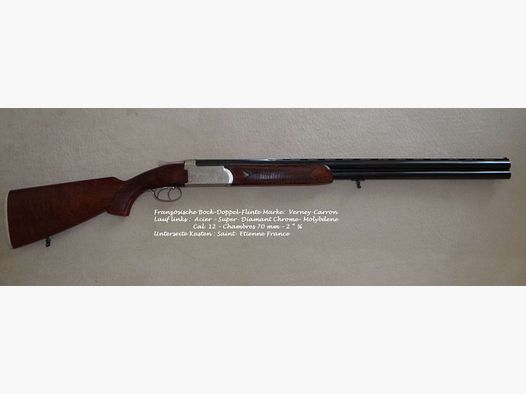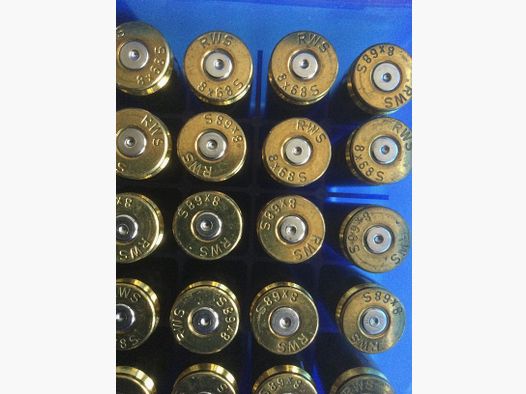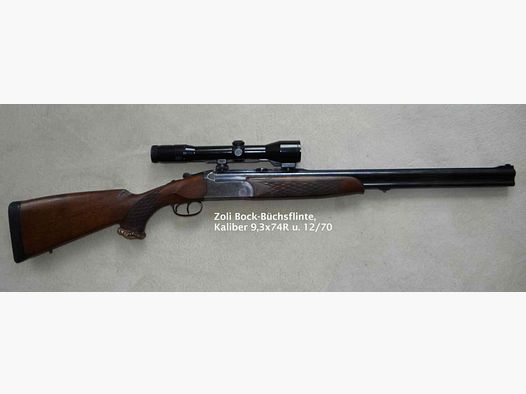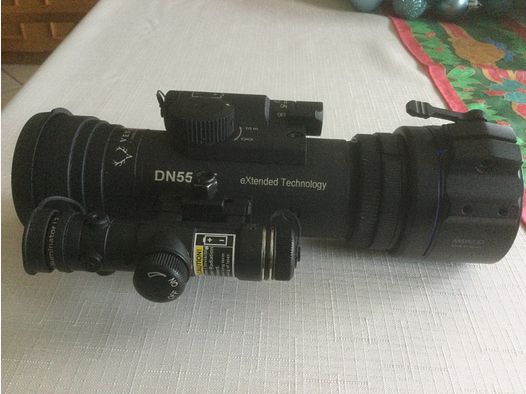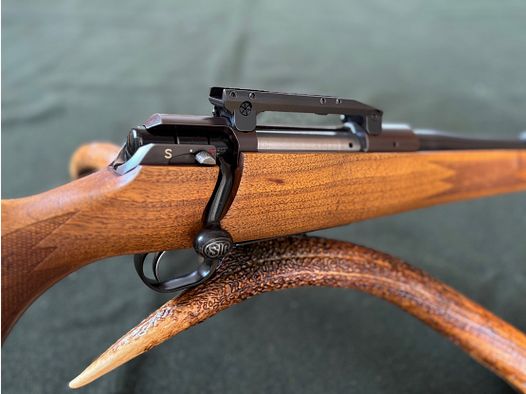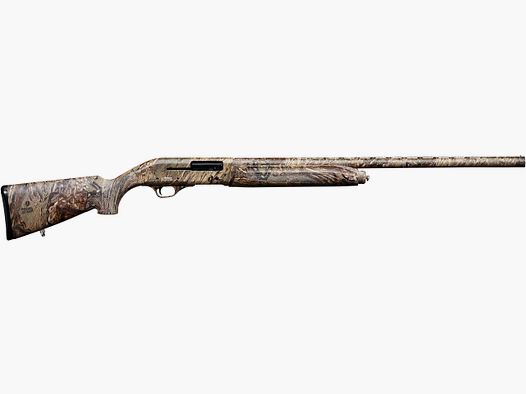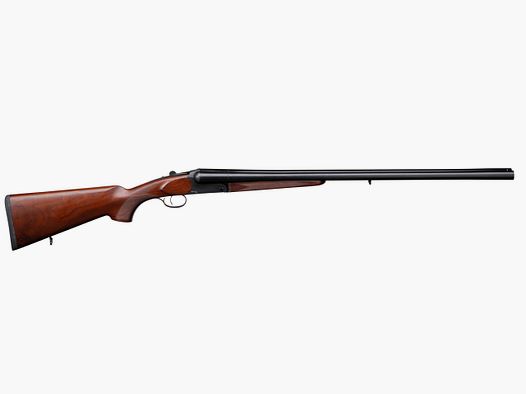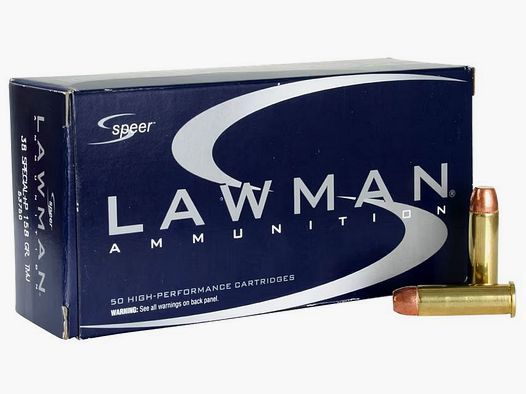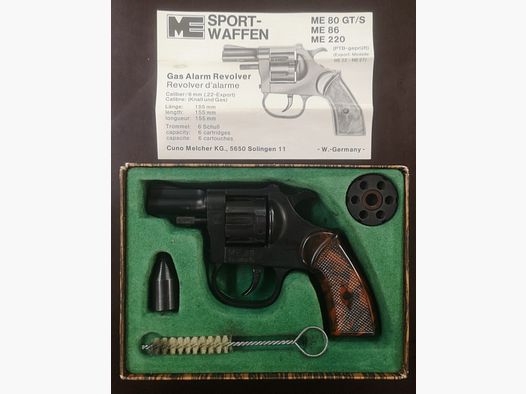A gun cabinet is a special safe or cabinet designed for the secure storage of firearms and ammunition. In Germany, gun cabinets are legally required to ensure the safe handling of weapons and to prevent access by unauthorized persons. There are various types of gun cabinets that offer different levels of security depending on requirements and needs. The following sections explain the most common types of gun cabinets and the approved classes in Germany in more detail.
Types of Gun Cabinets
Handgun Cabinets
Handgun cabinets are specifically designed for the storage of pistols and revolvers. They are generally smaller and more compact than long gun cabinets and provide space for a limited number of handguns. These cabinets have special holders or compartments to securely fix the weapons and protect them from damage. Handgun cabinets can be purchased as single or multiple cabinets, depending on how many weapons are to be stored.
Long Gun Cabinets
Long gun cabinets are larger and provide ample space for the storage of long guns such as rifles or shotguns. They are typically equipped with special gun holders and compartments to securely store and organize the weapons. Long gun cabinets can come in various sizes and capacities to meet individual needs. They often have additional compartments or shelves to store accessories such as scopes, magazines, or cleaning materials.
Combined Cabinets
Combined cabinets offer the option to store both handguns and long guns in a single cabinet. They are particularly practical for sports shooters or hunters who own both pistols and rifles. These cabinets feature a combination of gun holders and compartments to ensure safe and organized storage. Combined cabinets are available in various sizes and can be customized to meet individual requirements.
Approved Gun Cabinets in Germany
Gun cabinets in Germany are classified into different resistance classes (also referred to as security levels). This classification is based on the European standard EN 1143-1 and indicates how resistant the cabinet is to break-in attempts. The resistance classes range from 0 to 5, with higher classes offering a higher level of security. The following sections explain the different resistance classes in more detail:
Resistance Class 0 and I
Gun cabinets of resistance class 0 offer basic protection against break-in attempts. They are usually made of sturdy steel and have a solid locking mechanism. Although they provide the least protection, they still meet legal requirements and are suitable for private use.
Gun cabinets of resistance class I already offer increased protection against break-in attempts. They are more robust and resilient than cabinets of class 0. They have thicker steel walls, reinforced locks, and possibly additional security features such as integrated alarm systems or electronic code locks.
In a gun cabinet of class 0 according to DIN/EN 1143-1, an unlimited number of long guns and up to 5 handguns and ammunition can be stored if the weight is under 200 kilograms. If it is a gun cabinet of class I or higher, an unlimited number of handguns and long guns can be stored regardless of weight. This means that in cabinets with higher resistance classes, there is no weight limit for the storage of weapons as long as the security requirements are met.
This classification allows gun owners to securely and properly store their entire gun collection in a single gun cabinet without worrying about weight restrictions or limited space.
Weapons and ammunition do not need to be separated in a cabinet of class 0 according to DIN/EN 1143-1.
Resistance Class II
Gun cabinets of resistance class II offer even higher protection and are suitable for commercial and private use. They are significantly more stable and resilient against break-in attempts. They have thicker steel walls, multiple locked doors, and possibly additional safety features such as fire protection insulation.
Resistance Class III
Gun cabinets of resistance class III offer high protection against break-in attempts. They are designed for commercial use, for example in gun shops or shooting ranges. They have reinforced steel walls, multiple locked doors, and additional security features such as integrated alarm systems and fire protection insulation.
Resistance Class IV and V
Gun cabinets of resistance class IV and V offer the highest protection and are generally intended for professional use, for example in banks or authorities. They are extremely resilient against break-in attempts and have special security measures such as high-security locks, armored plates, and special reinforcements.
Old Resistance Classes A and B
The old resistance classes A and B for gun cabinets were part of an earlier classification that is no longer used in Germany. This classification was based on the VDMA 24992 standard and has been replaced by the current European standard EN 1143-1. Nevertheless, it is interesting to provide a brief overview of the old resistance classes A and B.
Resistance Class A
Gun cabinets of resistance class A corresponded to a lower security level. They offered basic protection against break-in attempts and were suitable for private use. These cabinets typically had thin steel walls and a simple locking mechanism. They met the legal requirements of the time but were less resilient against professional burglars.
Resistance Class B
Gun cabinets of resistance class B were more robust and resilient than cabinets of class A. They offered higher protection against break-in attempts and were suitable for both private and commercial use. These cabinets had thicker steel walls, reinforced locks, and additional security features such as integrated alarm systems.
It is important to note that the old resistance classes A and B no longer comply with current German regulations and have been replaced by the resistance classes according to the European standard EN 1143-1. This current standard ensures higher safety standards for gun cabinets and provides better protection against break-in attempts. When purchasing a gun cabinet, it is essential to ensure that it meets current legal requirements and has the correct resistance class to provide adequate protection for your firearms and ammunition.
Grandfathering for A and B Cabinets
Grandfathering applies to A and B cabinets, allowing them to be used without restrictions. The current owner also has the option to acquire additional firearms and store them in the existing cabinets. If the cabinet is fully occupied according to legal regulations, at least one cabinet of class 0 must be purchased with a new purchase.
The storage capacity for cabinets with grandfathering is set as follows: An A cabinet may hold up to 10 long guns. For a B cabinet, there is no limit on the storage of long guns. A B cabinet weighing less than 200 kilograms may also contain 5 handguns, while a B cabinet weighing 200 kilograms or more provides space for 10 handguns. If a B cabinet weighs less than 200 kilograms but is securely anchored, it may also hold 10 handguns. However, it is important to note that regardless of storage capacity, the legal regulations for the safe storage of firearms and ammunition must always be adhered to.
When selecting the resistance class for a gun cabinet, it is crucial to consider the number and type of firearms to be stored as well as individual security needs. It is highly recommended to seek the expertise of a professional before purchasing a gun cabinet. This ensures that all legal requirements are met and that the gun cabinet meets individual needs. Professional advice allows for the selection of the correct resistance class and the optimal security solution for the storage of firearms. Consulting an expert not only ensures compliance with applicable regulations but also guarantees a high standard of security and thus the best possible protection for valuable equipment.







